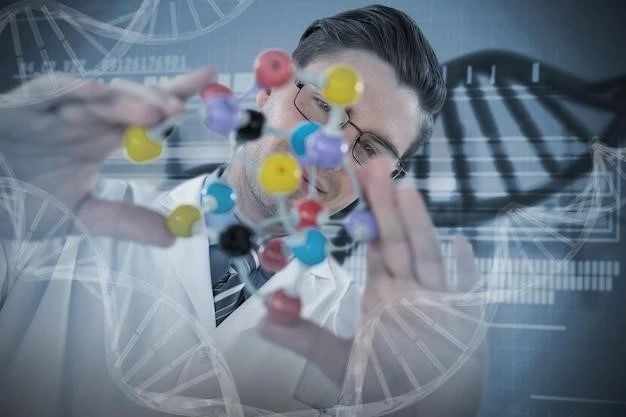Introduction to Van Maldergem–Wetzburger–Verloes Syndrome
The Van Maldergem–Wetzburger–Verloes Syndrome‚ also known as Van Maldergem Syndrome‚ is a rare genetic disorder associated with specific facial and hand abnormalities. It is crucial to understand the clinical and molecular aspect of this syndrome for accurate diagnosis.
Van Maldergem–Wetzburger–Verloes Syndrome‚ also known as Van Maldergem Syndrome‚ is associated with the FAT4 (FAT Atypical Cadherin 4) gene. This rare genetic disorder presents characteristic facial and hand abnormalities.
Clinical Features
Individuals with Van Maldergem–Wetzburger–Verloes Syndrome may exhibit specific facial abnormalities and hand anomalies. It is essential to recognize these unique characteristics for accurate diagnosis and treatment planning.
Description and Gene Association
Van Maldergem–Wetzburger–Verloes Syndrome‚ associated with the FAT4 gene‚ is characterized by specific facial and hand abnormalities. Understanding the genetic basis can assist in identifying this rare genetic disorder.
Characteristic Symptoms
Characteristic symptoms of Van Maldergem–Wetzburger–Verloes Syndrome include distinctive facial features‚ hand anomalies‚ intellectual disability‚ muscle tone abnormalities‚ and joint hyperlaxity. Recognizing these symptoms is crucial for timely diagnosis and management of this rare genetic disorder.
Diagnosis and Testing
Clinical assessment and molecular genetic testing are crucial for diagnosing Van Maldergem–Wetzburger–Verloes Syndrome. Molecular analysis‚ such as the Clinical Molecular Genetics test and Sequence Analysis‚ aids in identifying mutations in the FAT4 gene for accurate diagnosis.
Clinical Molecular Genetics Test
For the diagnosis of Van Maldergem–Wetzburger–Verloes Syndrome‚ a Clinical Molecular Genetics test analyzing the FAT4 gene is crucial. Sequence analysis of the entire coding region helps identify mutations associated with this rare genetic disorder.
Sequence Analysis
Sequence analysis of the entire coding region is integral in diagnosing Van Maldergem–Wetzburger–Verloes Syndrome. Bi-directional Sanger sequencing helps identify mutations in the FAT4 gene‚ aiding in accurate diagnosis and genetic understanding of this rare genetic disorder.
Genetic Associations
Van Maldergem–Wetzburger–Verloes Syndrome is linked to the FAT4 gene and presents biallelic variants associated with specific disorders. Understanding these genetic connections is crucial for diagnosis and treatment planning.
Biallelic Variants in FAT4
Biallelic variants in the FAT4 gene are linked to both Van Maldergem Syndrome (VMS) and Hennekam Syndrome (HS)‚ exhibiting distinct facial characteristics and varying associated symptoms. Genetic analysis plays a crucial role in identifying these variants for accurate diagnosis and treatment planning in individuals with these rare genetic disorders.
Associated Disorders
Biallelic variants in the FAT4 gene are linked to Van Maldergem Syndrome (VMS) and Hennekam Syndrome (HS). While both conditions share characteristic facial features and intellectual disability‚ they differ in additional symptoms such as neonatal hypotonia‚ lymphedema‚ and hearing loss‚ highlighting the importance of genetic analysis in distinguishing between these related disorders;
Background and Case Presentation
A female patient with endocrine abnormalities and hypogonadotropic hypogonadism presents a complex case of Van Maldergem syndrome‚ emphasizing the importance of early evaluation and comprehensive management for individuals with this rare genetic disorder.
Patients with Van Maldergem syndrome may present with endocrine abnormalities‚ including hypogonadotropic hypogonadism. Early recognition and management of these endocrine issues are crucial for optimizing the overall health and well-being of affected individuals.
Endocrine Abnormalities
Patients diagnosed with Van Maldergem syndrome may exhibit endocrine abnormalities‚ like hypogonadotropic hypogonadism. It is essential to monitor and manage these endocrine issues to optimize the overall health and quality of life for individuals affected by this rare genetic disorder.

Similar Syndromes and References
Pashayan Syndrome‚ also known as Pashayan-Pruzansky Syndrome‚ shares similarities with Van Maldergem Syndrome. External links and references can provide further insight into these conditions for a comprehensive understanding.
Pashayan Syndrome
Pashayan Syndrome‚ also known as Pashayan-Pruzansky Syndrome‚ shares similarities with Van Maldergem Syndrome‚ highlighting the importance of accurate diagnosis and differentiation between these related conditions. Exploring external references can provide valuable insights into these syndromes for healthcare professionals.
External Links and References
External links and references can provide valuable information on Van Maldergem–Wetzburger–Verloes Syndrome‚ offering insights into genetic associations‚ diagnostic testing‚ and case studies. These resources can assist healthcare professionals in staying informed about this rare genetic disorder and its management.
Pathways and Superpathways
Genetic Pathways Associated with Van Maldergem–Wetzburger–Verloes Syndrome play a crucial role in understanding the condition. Explore the impact of Dchs1-Fat4 signaling on osteoblast differentiation for insights into disease mechanisms.
Genetic Pathways Associated with VMS
The genetic pathways associated with Van Maldergem–Wetzburger–Verloes Syndrome play a pivotal role in understanding the disease’s pathogenesis. The involvement of the Dachsous Cadherin-Related 1 (DCHS1) gene in contributing to this complex syndrome highlights the significance of genetic mechanisms in disease manifestation and progression.
Medical Studies and Findings
Medical studies on Van Maldergem–Wetzburger–Verloes Syndrome have provided valuable insights into the genetic basis and clinical manifestations of this rare genetic disorder. Keeping up to date with the latest research findings is essential for healthcare providers managing individuals with this condition.
Research Studies on VMS
Research studies focused on Van Maldergem Syndrome (VMS) have provided insights into the genetic basis‚ clinical features‚ and management strategies for this rare genetic disorder. Staying informed about the latest advancements in VMS research is essential for healthcare professionals involved in the care of affected individuals.
Recent Developments and Discoveries
Stay informed about the latest advancements in Van Maldergem–Wetzburger–Verloes Syndrome research. Understanding new discoveries can enhance patient care and management strategies for this rare genetic disorder.
Latest Updates on VMS
Staying informed about the latest research and developments on Van Maldergem–Wetzburger–Verloes Syndrome is crucial for healthcare professionals. Continuously seeking the most recent updates can aid in enhancing diagnostic and treatment strategies for individuals affected by this rare genetic disorder.

Role of Dchs1-Fat4 Signaling
The Dchs1-Fat4 signaling pathway plays a significant role in the pathogenesis of Van Maldergem–Wetzburger–Verloes Syndrome. Understanding the impact of this signaling pathway on osteoblast differentiation is crucial for unraveling the disease mechanisms associated with this rare genetic disorder.
Impact on Osteoblast Differentiation
The Dchs1-Fat4 signaling pathway significantly influences osteoblast differentiation in Van Maldergem–Wetzburger–Verloes Syndrome. Understanding the role of this signaling pathway is crucial for unraveling the disease mechanisms associated with this rare genetic disorder‚ offering potential insights for targeted treatments and management strategies.
and Implications
Understanding the genetic pathways and recent research findings regarding Van Maldergem–Wetzburger–Verloes Syndrome is crucial for healthcare professionals. Staying updated on new discoveries can significantly impact diagnostic accuracy and treatment strategies for individuals affected by this rare genetic disorder.
Significance of Understanding VMS
Van Maldergem–Wetzburger–Verloes Syndrome‚ often referred to as Van Maldergem Syndrome‚ is a rare genetic disorder associated with the FAT4 gene. The syndrome presents with distinct facial and hand abnormalities. Genetic testing‚ including the Clinical Molecular Genetics test and Sequence Analysis‚ plays a vital role in diagnosing this condition. Understanding the genetic pathways and associations‚ such as biallelic variants in FAT4‚ is crucial for accurate diagnosis and treatment planning. Research studies and the latest updates on VMS provide valuable insights for healthcare professionals managing individuals with this syndrome. The Dchs1-Fat4 signaling pathway impacts osteoblast differentiation‚ shedding light on disease mechanisms. Staying informed about recent developments and discoveries in VMS research is essential for enhancing patient care and management strategies. By comprehending the significance of understanding VMS‚ healthcare providers can improve diagnostic accuracy and implement effective treatment approaches for individuals affected by this rare genetic disorder.
